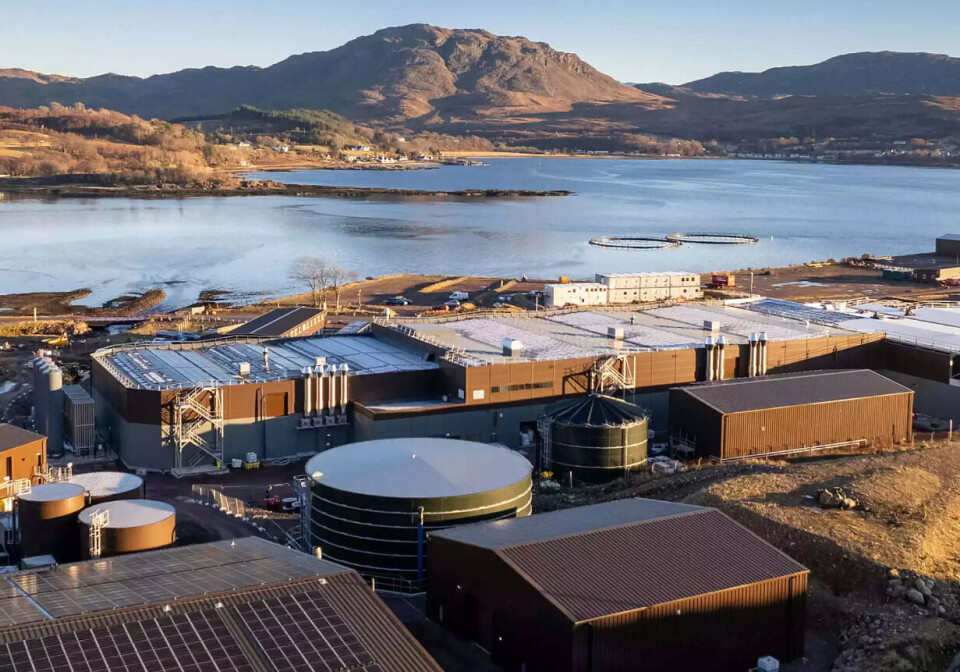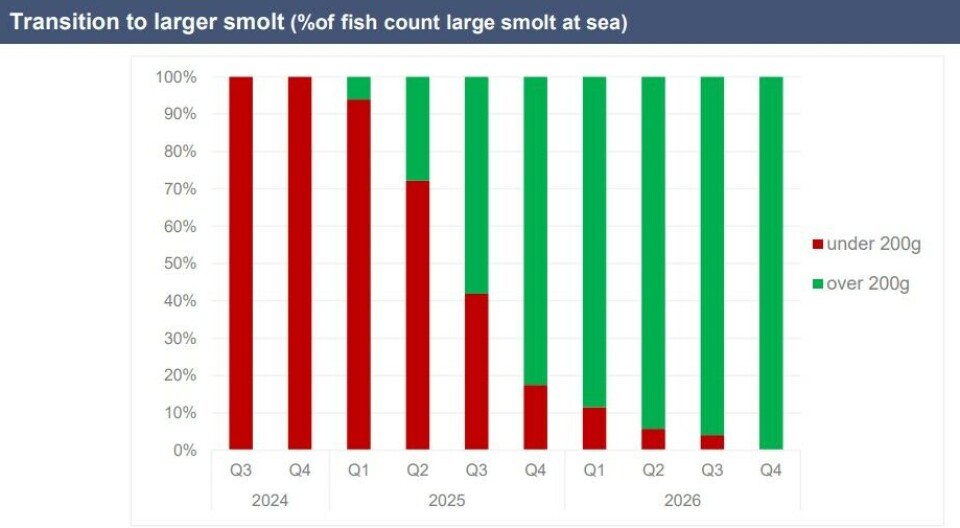
Bakkafrost Scotland's RAS and smolts are both getting bigger
Average size of Applecross fish transferred to sea has increased by 80%
The average weight of smolts transferred to marine sites from Bakkafrost Scotland’s flagship recirculating aquaculture system (RAS) facility at Applecross in Wester Ross was 232 grams in the first quarter of this year - 80% higher than in Q1 2024.
Those fish pushed the average weight for all of Bakkafrost’s smolts stocked in Scotland in the quarter to 169g, which is 40% higher than in the same period last year.
“During 2025, the biomass at sea will gradually change character, transitioning to be based on high-quality smolt. This strategic shift is expected to enhance overall fish health and growth rates, leading to a more robust and sustainable aquaculture environment,” Bakkafrost Group writes in its Q1 2025 report published today.
Growing output
The Faroes and Scotland salmon farmer says that in the Scottish freshwater operation the main priority is to ensure a steadily growing output of large high-quality smolt from Applecross, which is currently in the ramp-up phase to deliver fish above 200g in 2025.
“This is not a straight-line development, but a delicate and gradual process involving some level of risk which reduces as the operation is finetuned, and all procedures executed at least once,” explains Bakkafrost.
“Production volume and smolt release will increase throughout the year and into 2026. With the new Applecross 5 module now in production, the production capacity is around 3,500 tonnes of smolt annually. This capacity will be utilised to make Bakkafrost self-sufficient with around 14 million high-quality smolt of 250g.
“Another priority in 2025 is the completion of the Applecross phase 6 and 7, which will improve the biosecurity in the smolt production and add flexibility.”

The production of larger smolts is central to Bakkafrost’s policy of producing “one summer” salmon that only spend one summer at sea, when warmer water temperatures accelerate the increase of sea lice populations and increase the likelihood of biological challenges such as algal blooms, micro jellyfish, and amoebic gill disease (AGD).
Larger smolts also enable better utilisation of marine sites, which is particularly important in the Faroes where the opportunity for new farms is limited by the country’s policy of allowing only one producer in each fjord.
Bakkafrost has been pursuing its large smolt policy in the Faroes for longer and expects to transfer around 18.5 million smolts with an average weight of around 430g to its Faroese farms this year.
In Scotland, the smolt transfer in 2025 is expected to be around 10 million smolts with an average weight of above 200g.
500g target
When Applecross is operating at full capacity, it will produce 8 million smolts a year with an average weight of 500g.
Bakkafrost also has plans for a second large RAS hatchery at Hunterston Port and Resource Centre (PARC) on the Clyde coast, near Largs. That hatchery would produce 10 million 500g smolts, although investment announced by Bakkafrost in 2022 has been delayed.
“Since the announcement of the 2024-2028 investment plan, Bakkafrost has decided to change the priority of some of the investment projects in Scotland, including the second planned hatchery at Fairlie and new processing facility,” the company writes in its Q1 report.
“Consequently, the capex spend in 2024 and 2025 is expected to reduce around DKK 800m in total, compared to the investment levels announced in the 2024-2028 investment plan.”